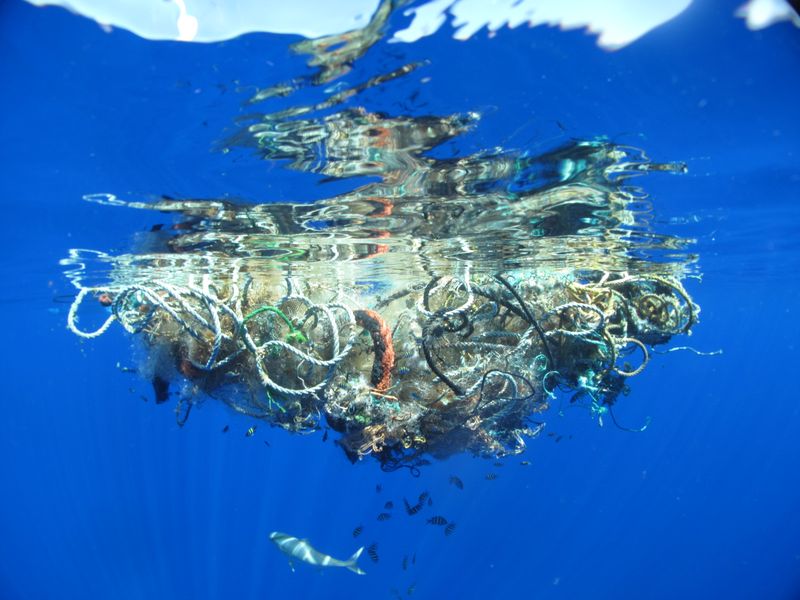Government Grants
Business Grants
Home Owner Programs
Federal Programs
About Us
MM-22-03: Fish Fry: Frying Pan Shoals Ecosystem Dynamics
BOEM is charged with the environmentally responsible management of Outer Continental Shelf (OCS) resources in federal waters (i.e., 3 nautical miles (nm) offshore of most states, except off Texas and the Gulf coast of Florida, where it starts at 9 nm).
Through BOEM’s Marine Minerals Program
(MMP), BOEM may issue agreements (or leases) for the use of sand, gravel, and shell resources for shore protection, beach or wetlands restoration projects.
As the demand for OCS sand increases, the MMP is facing increasingly complex use conflict challenges.
A better understanding of the use of habitats and sand features by fish is important for MMP in order to evaluate the utilization and management of sand borrow areas in federal waters.
Most federal waters serve as Essential Fish Habitat (EFH), which are waters important to fish for growing and reproducing.
National Oceanic and Atmospheric Administration’s (NOAA) National Marine Fisheries Service (NMFS) designates and manages EFH for all federally managed species, meaning fishes that have commercial or recreational interest.
In addition, FPS is currently designated by the South Atlantic Fishery Management Council (SAFMC) and NMFS as Habitat Area of Particular Concern (HAPC) for many fish species.
Before dredging occurs, BOEM consults with NMFS on potential impacts to EFH and HAPC.
The coastal communities of the Cape Fear Region of North Carolina have experienced rapid population growth, increased economic growth via tourism, and increased land values.
Erosion continues to be problematic, and the demand for long-term, beach-compatible sand resources to support future nourishment needs is increasing.
The current demand for sand exceeds the available volume and frequency of navigation dredging events.
Therefore, additional offshore sand resources are needed to meet the demand for sand.
The ecosystem services (bioenergetics, trophic transfer) of these shoal complexes and the relevance of the habitat to benthic communities, fishes, and trophic structure have been studied extensively in the sub-tropical climate along Canaveral Shoals, Florida (see aforementioned studies).
However, despite the relative abundance of such habitat along the inner shelf of the Mid- and South-Atlantic Bight, little is known about the baseline use of these shoals by federally managed fishes.
To identify appropriate conservation and mitigation measures, a comprehensive understanding of the quality and function of the habitat and how it may contribute to different ecosystem services over storm, post-disturbance, and seasonal and inter-annual time scales is needed.
Through BOEM’s Marine Minerals Program
(MMP), BOEM may issue agreements (or leases) for the use of sand, gravel, and shell resources for shore protection, beach or wetlands restoration projects.
As the demand for OCS sand increases, the MMP is facing increasingly complex use conflict challenges.
A better understanding of the use of habitats and sand features by fish is important for MMP in order to evaluate the utilization and management of sand borrow areas in federal waters.
Most federal waters serve as Essential Fish Habitat (EFH), which are waters important to fish for growing and reproducing.
National Oceanic and Atmospheric Administration’s (NOAA) National Marine Fisheries Service (NMFS) designates and manages EFH for all federally managed species, meaning fishes that have commercial or recreational interest.
In addition, FPS is currently designated by the South Atlantic Fishery Management Council (SAFMC) and NMFS as Habitat Area of Particular Concern (HAPC) for many fish species.
Before dredging occurs, BOEM consults with NMFS on potential impacts to EFH and HAPC.
The coastal communities of the Cape Fear Region of North Carolina have experienced rapid population growth, increased economic growth via tourism, and increased land values.
Erosion continues to be problematic, and the demand for long-term, beach-compatible sand resources to support future nourishment needs is increasing.
The current demand for sand exceeds the available volume and frequency of navigation dredging events.
Therefore, additional offshore sand resources are needed to meet the demand for sand.
The ecosystem services (bioenergetics, trophic transfer) of these shoal complexes and the relevance of the habitat to benthic communities, fishes, and trophic structure have been studied extensively in the sub-tropical climate along Canaveral Shoals, Florida (see aforementioned studies).
However, despite the relative abundance of such habitat along the inner shelf of the Mid- and South-Atlantic Bight, little is known about the baseline use of these shoals by federally managed fishes.
To identify appropriate conservation and mitigation measures, a comprehensive understanding of the quality and function of the habitat and how it may contribute to different ecosystem services over storm, post-disturbance, and seasonal and inter-annual time scales is needed.
Related Programs
Minerals Management Service (MMS) Environmental Studies Program (ESP)
Department of the Interior
Agency: Department of the Interior
Office: Bureau of Ocean Energy Management
Estimated Funding: $2,000,000
Office: Bureau of Ocean Energy Management
Estimated Funding: $2,000,000
Who's Eligible
Relevant Nonprofit Program Categories
Obtain Full Opportunity Text:
http://grants.nih.gov/grants/guide/rfa-files/RFA-MH-22-180.html
Additional Information of Eligibility:
Coastal State Governments and Public, State Controlled Institutions of Higher Education in the following Cooperative Ecosystem Studies Units (CESUs): Piedmont-South Atlantic Coast.
Full Opportunity Web Address:
http://grants.nih.gov/grants/guide/rfa-files/RFA-MH-22-180.html
Contact:
Agency Email Description:
Dominique.Bruce-Morton@bsee.gov
Agency Email:
Date Posted:
2022-05-17
Application Due Date:
Archive Date:
2022-10-01
Social Entrepreneurship
Spotlight
Building a Million Dollar Company Where Everyone Counts

Ganesh Natarajan is the Founder and Chairman of 5FWorld, a new platform for funding and developing start-ups, social enterprises and the skills eco-system in India. In the past two decades, he has built two of India’s high-growth software services companies – Aptech and Zensar – almost from scratch to global success.

